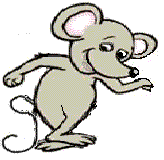
Email : [email protected] Or General Mailer
 |
Jai Chavan's
"Dance-Sport" Email : [email protected] Or General Mailer |
| Back || Master Pg. || Overview || Contents || Alphabetical Index || Home || Next |
Mark Time & First Exercise: Basic Step
 |
"The March" is the first organised "War Dance" in the world. Most of the basics of this dance are required in the Dance-Sport as well. |
Mark Time
This is the raising of the alternate foot as when marching but
without moving anywhere. Only one foot is on the ground and the
count is on the foot carrying the body weight. The knees are
flexed by pushing them forward and up, such that the heel is
lifted vertically up and not swung backwards. Land on the ball of
the foot to absorb the shock and reduce the noise from the shoes
as much as possible. As soon as the complete body weight comes to
settle on one foot the count comes into force.
Starting position for the purpose of this exercise is standing with the weight on the right foot, and the left foot is ready to move.
First Exercise
Start mark time on the spot and count from one to four, at
whatever rhythm one finds most convenient. Thus all the odd
number counts will come on the left foot and even on the right.
Once you are comfortable with this you could slowly try moving forward, backwards, then to the sides, and later add turns in your routine. All this is to be done without sacrificing the rhythm and consciously noting that all the odd numbers are still coming on the left foot. Initially one needs to be extra careful especially when changing the direction of movement, like when moving from side to the side, when one may have two counts on the same foot by mistake.
One should aim to be able to make changes in the movement, as fast as possible without losing the rhythm and having one count for one step only, till it stops being a challenge, and this is when one should proceed further. The trick here is to let the body move and to let the feet fall into place under the body.
Please note.
1. Always flex the knee of the free foot irrespective of the
direction of the direction of movement.
2. When stepping forward or back the toes are facing straight to the front, and the inner thighs should be in contact.
3. When moving to side one is moving to one's own side.
4. All movements should be as comfortable as a normal walk.
5. The upper body is carried erect but not stiff.
6. All the natural body movements that occur when normally walking should be allowed and no extra movements to be added.
| Back || Master Pg. || Overview || Contents || Alphabetical Index || Home || Next |